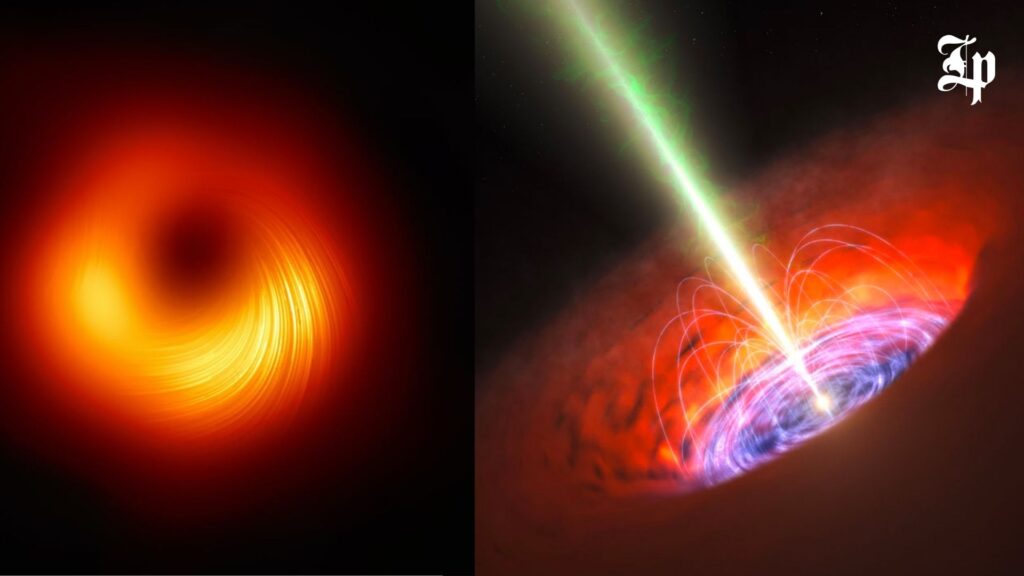Stanford astrophysicist Dan Wilkins and his partners were contemplating a supermassive dark opening when something grabbed their eye— a progression of brilliant flares of X-beams. The emanation of such high-energy photons from a dark opening was charming, however not really remarkable. It was fascinating enough for Wilkins to investigate.
Wilkins saw extra, more modest glimmers of X-beams that were unique “colors” than the brilliant flares. They likewise seemed, by all accounts, to be postponed. Seeing this was odd, Wilkins said, as they anticipated that the smaller flashes should be a “reverberation” of the main glimmers.

They set about estimating these X-beams’ shade, the postponement among them,, and the underlying X-beam streak.
“We understood that these should be the reverberation coming from a touch of gas that ought to be taken cover behind the dark openings, so the gas on the opposite side of the dark opening to us, ” Wilkins said. Maybe they saw something on the “furthest side of the dark opening we shouldn’t have the option to see — on the grounds that whatever goes into the dark opening can’t come out,” he added. “In case something’s on the opposite side of the dark opening from us, the light shouldn’t have the option to traverse the dark opening towards us.”
However, dark openings don’t obscure light the manner in which a moon or a planet may. Because of their extreme mass, light twists and bends around them, similar to vehicles driving on a straight road unexpectedly steering around a pothole.
Wilkins and his group noticed that the dark opening was distorting space and bowing light around itself. (The examination is definite in a paper distributed July 28 in Nature). However anticipated by Albert Einstein’s hypothesis of general relativity, it has never been affirmed on a particularly outrageous scale — for this situation, space experts identifying light [in the X-beam spectrum] being twisted from the contrary side of a dark opening.
“This implies that these echoes of X-beams from the most distant side of the dark opening don’t need to go through the dark opening for us to see them,” Wilkins said. “They can really get bowed around the dark opening, which is the reason we can see them.”
X-beams are typically seen when gas falls into dark openings. However, in those cases, the X-beam discharges are not from the dark opening itself (light can’t get away). Normally, space experts just notice these straightforwardly — they had never noticed them as they were twisted from the contrary side of a dark opening, the specialists say.
“Fifty years prior, when astrophysicists beginning conjecturing about how the attractive field may act near a dark opening. They had no clue that one day we may have the methods to notice this straightforwardly. And we might see Einstein’s overall hypothesis of relativity in real life.” said Roger Blandford, a co-creator of the paper and a Stanford educator of physical science, in a news discharge.
Avi Loeb, the previous seat of the cosmology division at Harvard University (2011-2020) and establishing overseer of Harvard’s Black Hole Initiative, told Salon through email the paper is “intriguing,” however, he addressed whether such an occasion had been noticed beforehand in 2019.
“It tracks down that short blazes of light from behind the dark opening are twisted around the dark opening and amplified by the solid gravitational field,” Loeb said. “Noticing light bowed around the dark opening affirms a critical expectation of general relativity.”
Loeb added that this was affirmed already when the Event Horizon Telescope “got a picture of the ring of light around the outline of the monster dark opening in the cosmic system M87.” That picture was famous for being the main direct picture of a dark opening and was meticulously delivered following quite a while of study and information investigation.
“That ring was additionally created through a twisting of light by gravity close to the dark opening,” Loeb noted.
Regardless of whether you are a fanatic about the exact meaning of “behind a dark opening,” the new investigation is notable in that there have not been many such perceptions in cosmology history. Indeed, there is a lot to gain from an immediate perception of dark openings twisting light, as dark openings discharge probably the most extreme gravitational and electromagnetic fields of anything in the universe.
“By considering this, we can start to see how the most brilliant light sources in our entire universe work,” Wilkins said. “But on the other hand, it’s a significant piece of the riddle to find out about how the systems shaped and how the world that we live in, the universe that we live in, truly appeared.”

